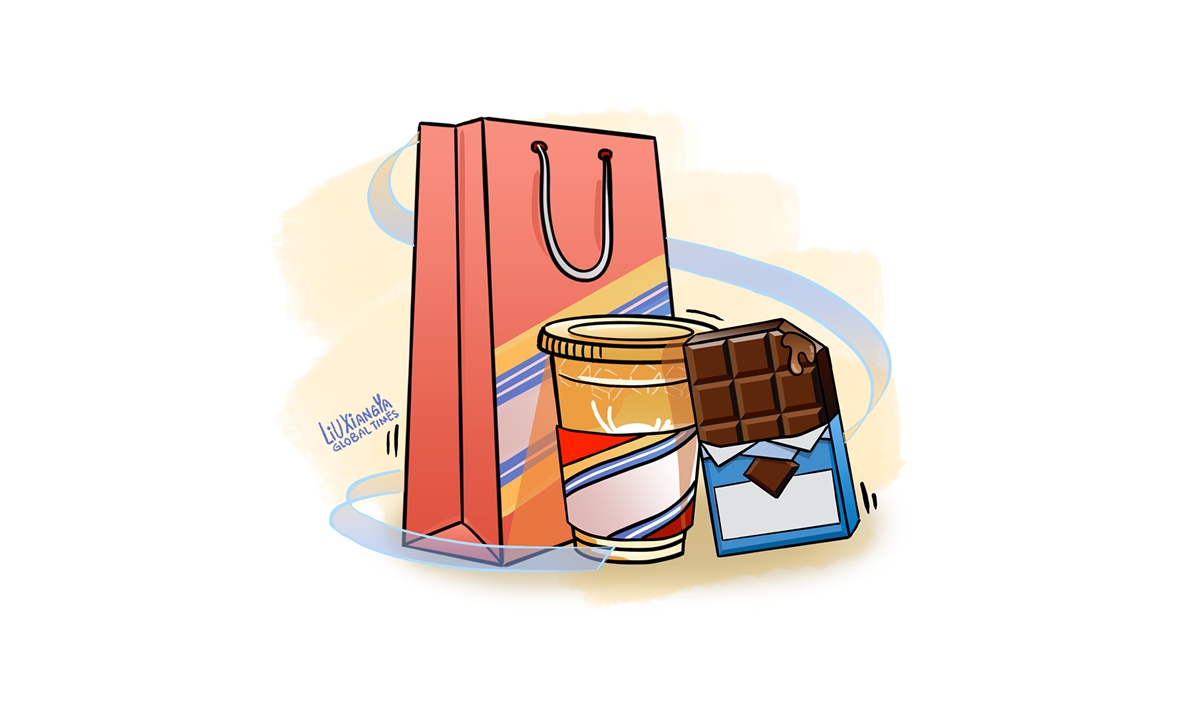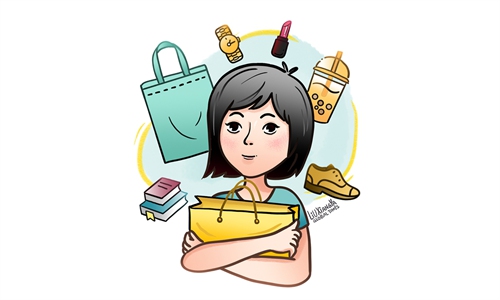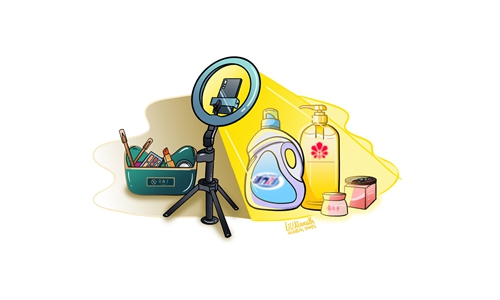ARTS / CULTURE & LEISURE
1+1 greater than 2? Joint branding says ‘yes’

Illustration: Liu Xiangya/Global Times
So far this year, there have been several high-profile cases of joint branding, from collaboration between trendy beverage and luxury fashion brands to the recent alcoholic lattes and liquor-filled chocolate, unusual offerings respectively rolled out by a famous Chinese coffee chain and a US chocolate brand in its new tie-up with China's fiery national liquor baijiu.According to data, such co-branding products achieved astonishing sales. They became a hot topic on Chinese social media as well. For instance, the coffee chain store announced it sold more than 54.2 million cups of the liquor-flavored latte, with sales topping 100 million yuan ($13.6 million) on the first day, and many stores had sold out the offering due to a shortage of the liquor. Therefore, it had placed an urgent order and organized suppliers for emergency production. On social media platform Sina Weibo, "Can we drive a car after drinking that alcoholic coffee?" was once the No.1 topic with 430 million views. So, what are the driving forces behind such a phenomenon? Has co-branding become a magic weapon in today's fierce marketing war?
Firstly, by collaborating with leading brands in other industries, both parties fully utilize their respective edges to enhance their competitive advantages, bringing more attractive and novel products and reaching a larger group of consumers. This is a deep exploration and practical application of sales channel resources and enhancing and developing brand culture. For example, in the fashion industry, through cooperation with trendy brands, traditional luxury brands can reach a broader demographic and better meet the needs of young consumers. This cooperation can bring more sales and shape a more energetic image for the brand.
Secondly, co-branding actualizes a brand's asset value. In addition to traditional functional attributes, the use and emphasis of luxury brand sensory elements such as colors, brand identity, and flavor have become significant external features of co-branded products and even the main reason for their high popularity. Although the official repeatedly claims that the alcohol content in each cup of the latte was low, it still became the most crucial reason why many flocked to have a taste. This is not the first time the national liquor has empowered other products as a key ingredient to increase added value and shorten the distance from ordinary consumers, sparking their curiosity and enriching their experience. This is a typical realization and amplification of brand value in joint branding marketing.
Finally, joint branding boosts the driving force of consumption. As we all know, the core goal of advertising is to arouse consumers' willingness to experience a product, which is converted into purchasing behavior through reinforcement. In this process, marketing will optimize the product, channels, and price combination to move consumers from awareness to consideration. Compared with traditional advertisements, whose success lies in brand power and the product itself, today's marketing depends on enhancing the driving force of consumption by providing consumers with continuous positive feedback, which is the key to building effective connections and increasing intimacy between brands and consumers.
The "Endowment Effect" in psychology suggests that the key to triggering consumer purchasing behavior lies in shaping a "sense of ownership." Once we feel that we own a particular brand (even a paper cup with a brand logo), we are more likely to choose that brand later. In other words, for luxury brands, the significance of co-branding lies in "breaking the ice" and building connections rather than "selling goods." The most significant advantage of fast-moving consumer goods brands such as tea and coffee is the frequent feedback between brands and consumers via repetitive purchases, precisely what luxury brands need in marketing. From this point, joint branding creates positive feedback by amplifying the value of brand assets value, promoting consumer sharing, and attracting attention from social media.
However, some potential risks still exist, such as the negative effect of some marketing on minors. For instance, the joint branding of alcoholic-related products may induce the under-age and even children to consume alcohol due to their exposure to these frequent marketing campaigns. Besides this, in the context of a lack of deep cultural connotations, a simple combination can only meet consumers' curiosity in the short term.
Still, it is easy to exert adverse effects on brand power due to insufficient internal and long-term vitality. With China's expanding market potential and consumption capacity, brands will increasingly explore the market through joint branding. How can we establish more profound cultural connotations without adverse societal effects and build positive game relationships between brands to achieve win-win situations?
These key points need to be considered in research and practice going forward.
The author is a faculty member with the School of Applied Economics, Renmin University of China. life@globaltimes.com.cn


